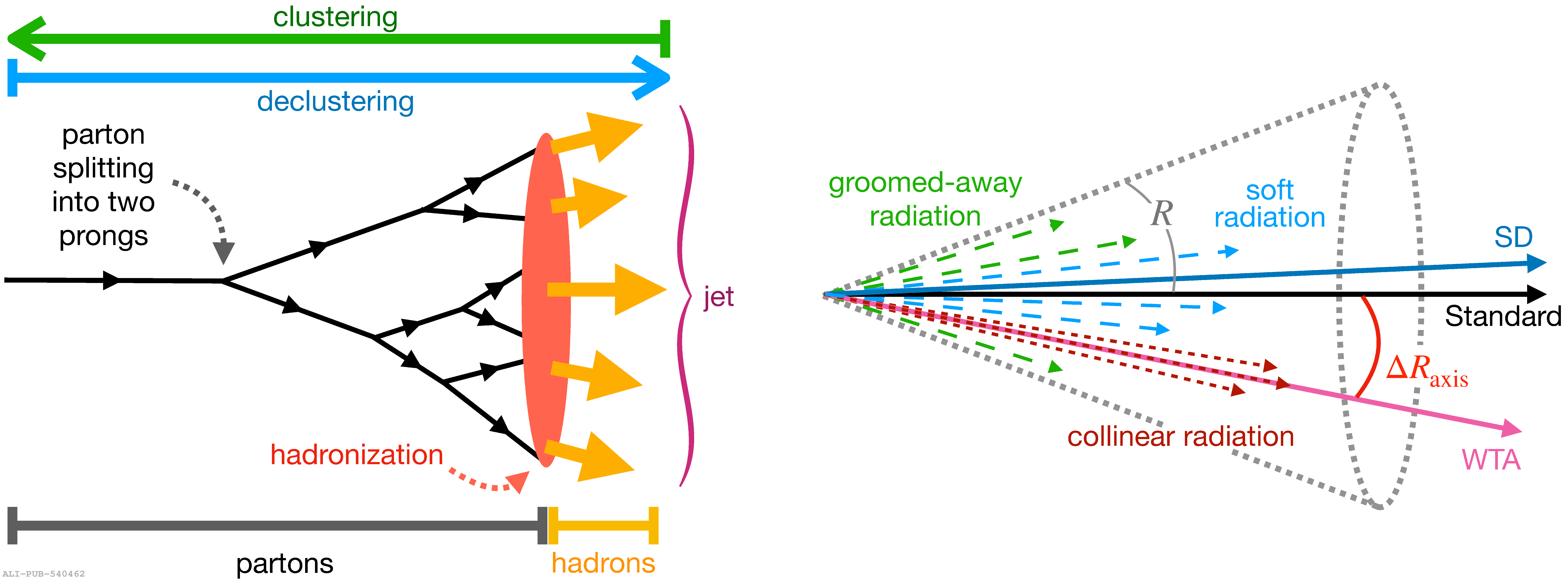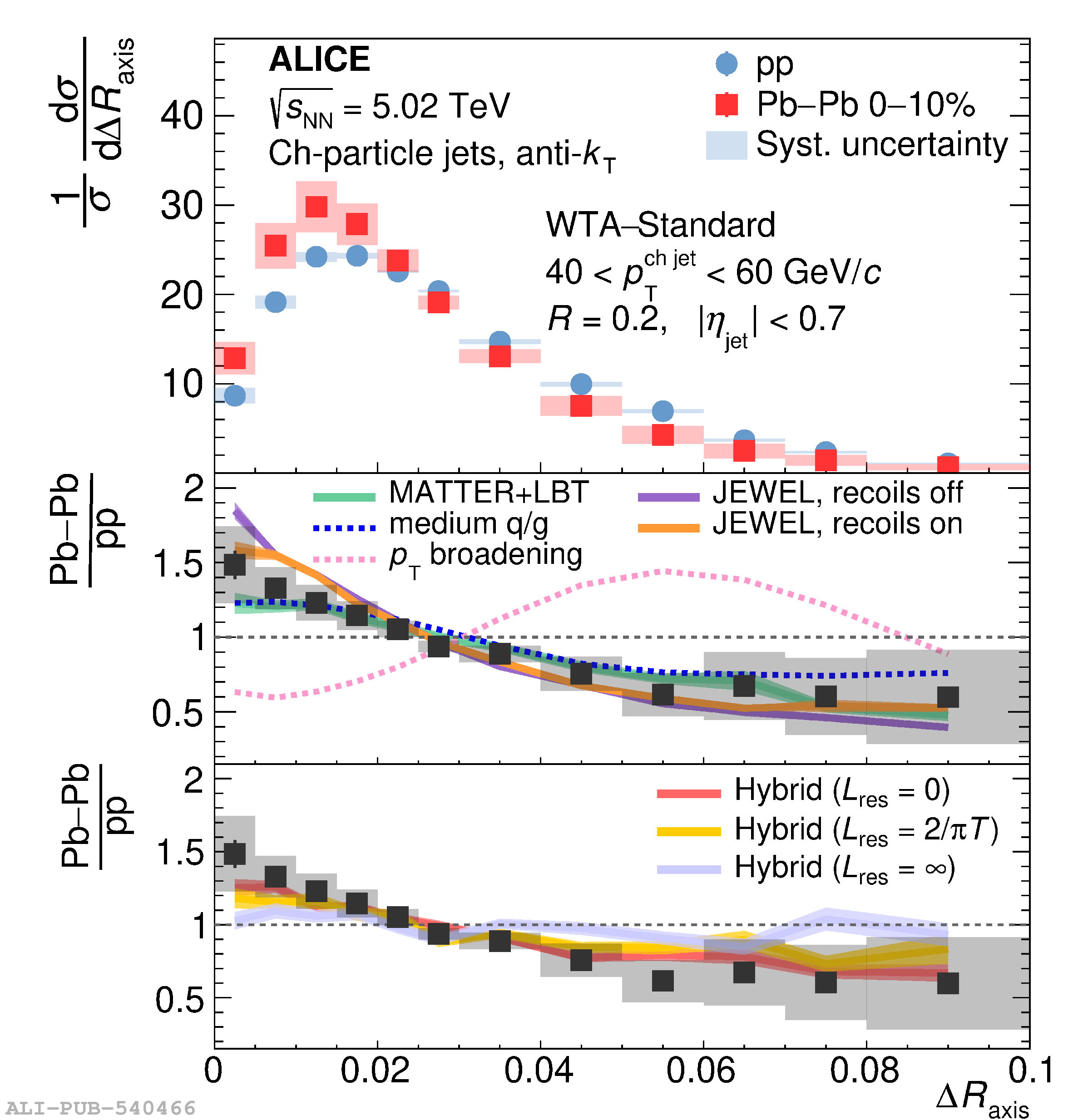This letter presents the first measurement of the angle between different jet axes (denoted as ${\Delta}R$) in Pb$-$Pb collisions. The measurement is carried out in the 0$-$10% most-central events at $\sqrt{s_{\rm NN}} = 5.02$ TeV. Jets are assembled by clustering charged particles at midrapidity using the anti-$k_{\rm T}$ algorithm with resolution parameters $R=0.2$ and $0.4$ and transverse momenta in the intervals $40 <~ p_{\rm T}^{\rm ch jet} <~ 140$ GeV/$c$ and $80 <~ p_{\rm T}^{\rm ch jet} <~ 140$ GeV/$c$, respectively. Measurements at these low transverse momenta enhance the sensitivity to quark$-$gluon plasma (QGP) effects. A comparison to models implementing various mechanisms of jet energy loss in the QGP shows that the observed narrowing of the Pb$-$Pb distribution relative to pp can be explained if quark-initiated jets are more likely to emerge from the medium than gluon-initiated jets. These new measurements discard intra-jet $p_{\rm T}$ broadening as described in a model calculation with the BDMPS formalism as the main mechanism of energy loss in the QGP. The data are sensitive to the angular scale at which the QGP can resolve two independent splittings, favoring mechanisms that incorporate incoherent energy loss.
Accepted by: PRC
e-Print: arXiv:2303.13347 | PDF | inSPIRE
CERN-EP-2023-046
Figure group





